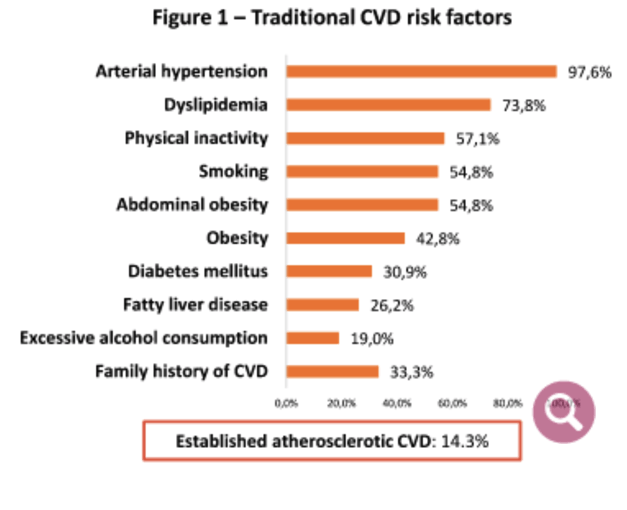 |
 |
 |
| |
Cardiovascular Risk Assessment with SCORE, SCORE2 and
D.A.D in People Living with HIV with High Prevalence
of Cardiovascular Risk Factors
|
| |
| |

Authors
M.J. Miguel1, D. Cruz2, A. A. Albuquerque2, A. Gomes1, I. Pintassilgo2, N. Marques1
purpose
To compare the results of three cardiovascular disease (CVD) risk prediction tools in people living with human immunodeficiency virus (PLWH) with high prevalence of CVD risk factors: the human immunodeficiency virus (HIV)-specific Data Collection on Adverse Events of Anti-HIV Drugs (D:A:D) model and the European general population-based Systematic COronary Risk Evaluation (SCORE) and its updated version, SCORE2.
method
The authors retrospectively studied all patients followed in a CVD risk clinic directed at PLWH from October 2021 until June 2023. Data was collected from computer hospital records and analyzed with Excel® software.
results
Study population consisted of 42 patients, of which 61.9% were male. The median age was 60 years. All patients presented CVD risk factors: 42.8% had obesity, 97.6% hypertension, 73.8% dyslipidemia, 30.9% diabetes and 54.8% smoking habits. Regarding HIV-specific CVD risk factors, 45.2% presented CD4 nadir below 200 cells/mm3, 71.4% had been exposed to protease inhibitors, 71.4% were currently taking integrase inhibitors and 30.1% were currently taking abacavir. Established atherosclerotic CVD was present in 14.3%. CVD risk was predicted to be high or very high in 42.9% using SCORE, in 76.2% using SCORE2 and in 95.2% using D:A:D. The observed agreement between SCORE2 and D:A:D was higher (35.7%) than between SCORE and D:A:D (21.4%).
conclusions
The study population showed highly discordant predicted CVD risk when comparing SCORE, SCORE2 and D:A:D. SCORE use resulted in lower predicted CVD risk, consistent with the demonstrated poor performance of this algorithm in PLWH. SCORE2 and D:A:D recently demonstrated similar performances in PLWH, which was not confirmed in this study. This finding might be explained by the high prevalence of CVD risk factors observed, namely HIV-specific factors that strongly modulate CVD risk. Further investigation is needed to improve CDV risk prediction in PLWH.


|
| |
|
 |
 |
|
|